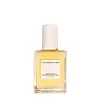What's inside
What's inside
 Key Ingredients
Key Ingredients

 Benefits
Benefits

 Ingredients Side-by-side
Ingredients Side-by-side

Water
Skin ConditioningNiacinamide
SmoothingButylene Glycol
HumectantPropanediol
SolventCentella Asiatica Extract
CleansingPanthenol
Skin ConditioningCeramide NP
Skin ConditioningSaccharide Isomerate
HumectantAllantoin
Skin ConditioningMirabilis Jalapa Extract
Skin ConditioningGlycerin
HumectantXylitol
Humectant1,2-Hexanediol
Skin ConditioningAcrylates/C10-30 Alkyl Acrylate Crosspolymer
Emulsion StabilisingAmmonium Acryloyldimethyltaurate/Vp Copolymer
Aminomethyl Propanol
BufferingCaprylic/Capric Triglyceride
MaskingChlorphenesin
AntimicrobialCaprylhydroxamic Acid
Disodium EDTA
Deoxyphytantriyl Palmitamide Mea
Skin ConditioningHydrogenated Lecithin
EmulsifyingCholesterol
EmollientCitric Acid
BufferingSodium Citrate
BufferingWater, Niacinamide, Butylene Glycol, Propanediol, Centella Asiatica Extract, Panthenol, Ceramide NP, Saccharide Isomerate, Allantoin, Mirabilis Jalapa Extract, Glycerin, Xylitol, 1,2-Hexanediol, Acrylates/C10-30 Alkyl Acrylate Crosspolymer, Ammonium Acryloyldimethyltaurate/Vp Copolymer, Aminomethyl Propanol, Caprylic/Capric Triglyceride, Chlorphenesin, Caprylhydroxamic Acid, Disodium EDTA, Deoxyphytantriyl Palmitamide Mea, Hydrogenated Lecithin, Cholesterol, Citric Acid, Sodium Citrate
Water
Skin ConditioningSqualane
EmollientGlycerin
HumectantGalactomyces Ferment Filtrate
HumectantCentella Asiatica Leaf Extract
Skin ConditioningCynanchum Atratum Extract
Skin ConditioningVitis Vinifera Seed Oil
EmollientSodium Acrylates/Beheneth-25 Methacrylate Crosspolymer
Skin ConditioningAllantoin
Skin ConditioningPrunus Avium Seed Oil
EmollientPhenoxyethanol
PreservativeHydrogenated Polydecene
EmollientHydroxydecyl Ubiquinone
AntioxidantSodium Polyacrylate Starch
AbsorbentLauryl Glucoside
CleansingEthylhexylglycerin
Skin ConditioningSodium Hyaluronate
HumectantHydrolyzed Royal Jelly Protein
Skin ConditioningCeramide EOP
Skin ConditioningCeramide Ns
Skin ConditioningCeramide NP
Skin ConditioningCeramide As
Skin ConditioningCeramide AP
Skin ConditioningBeta-Glucan
Skin ConditioningHydrogenated Lecithin
EmulsifyingCholesterol
EmollientGlyceryl Stearate
Emollient2,3-Butanediol
HumectantWater, Squalane, Glycerin, Galactomyces Ferment Filtrate, Centella Asiatica Leaf Extract, Cynanchum Atratum Extract, Vitis Vinifera Seed Oil, Sodium Acrylates/Beheneth-25 Methacrylate Crosspolymer, Allantoin, Prunus Avium Seed Oil, Phenoxyethanol, Hydrogenated Polydecene, Hydroxydecyl Ubiquinone, Sodium Polyacrylate Starch, Lauryl Glucoside, Ethylhexylglycerin, Sodium Hyaluronate, Hydrolyzed Royal Jelly Protein, Ceramide EOP, Ceramide Ns, Ceramide NP, Ceramide As, Ceramide AP, Beta-Glucan, Hydrogenated Lecithin, Cholesterol, Glyceryl Stearate, 2,3-Butanediol
 Reviews
Reviews

Ingredients Explained
These ingredients are found in both products.
Ingredients higher up in an ingredient list are typically present in a larger amount.
Allantoin is a soothing ingredient known for its protective and moisturizingg properties. Because of this, it is often added to products with strong active ingredients.
Studies show higher concentrations of this ingredient can promote wound healing.
Though it can be derived from the comfrey plant, allantoin is produced synthetically for cosmetic products to ensure purity.
Learn more about AllantoinCeramide NP is a type of ceramide.
Ceramides are intercellular lipids naturally found in our skin that bonds dead skin cells together to create a barrier. They are known for their ability to hold water and thus are a great ingredient for dry skin.
Ceramides are an important building block for our skin barrier. A stronger barrier helps the skin look more firm and hydrated. By bolstering the skin ceramides act as a barrier against irritating ingredients. This can help with inflammation as well.
If you would like to eat ceramides, sweet potatoes contain a small amount.
Read more about other common types of ceramides here:
Ceramide AP
Ceramide EOP
Cholesterol is a class of organic molecules called lipids. It helps hydrate your skin and is essential to having a healthy skin barrier.
Our skin naturally contains cholesterol in the outermost layer. Besides cholesterol, it also contains ceramides and fatty acids. Cholesterol makes up about 1/4 of your skin's outer layer and barrier. Your skin barrier is responsible for keeping allergens and microbes out. Having a healthy skin barrier is also responsible for keeping your skin firm and plump.
Our bodies use cholestrol to create vitamin D, steroid hormones, and more.
Learn more about CholesterolGlycerin is already naturally found in your skin. It helps moisturize and protect your skin.
A study from 2016 found glycerin to be more effective as a humectant than AHAs and hyaluronic acid.
As a humectant, it helps the skin stay hydrated by pulling moisture to your skin. The low molecular weight of glycerin allows it to pull moisture into the deeper layers of your skin.
Hydrated skin improves your skin barrier; Your skin barrier helps protect against irritants and bacteria.
Glycerin has also been found to have antimicrobial and antiviral properties. Due to these properties, glycerin is often used in wound and burn treatments.
In cosmetics, glycerin is usually derived from plants such as soybean or palm. However, it can also be sourced from animals, such as tallow or animal fat.
This ingredient is organic, colorless, odorless, and non-toxic.
Glycerin is the name for this ingredient in American English. British English uses Glycerol/Glycerine.
Learn more about GlycerinHydrogenated Lecithin is created from the hydrogenation of lecithin (a group of phospholipids). Hydrogenation is a chemical reaction between hydrogen and another element.
This ingredient is an emollient and emulsifier. As an emollient, it helps soften skin by trapping moisture within. As an emulsifier, it prevents oil and water ingredients from separating.
Water. It's the most common cosmetic ingredient of all. You'll usually see it at the top of ingredient lists, meaning that it makes up the largest part of the product.
So why is it so popular? Water most often acts as a solvent - this means that it helps dissolve other ingredients into the formulation.
You'll also recognize water as that liquid we all need to stay alive. If you see this, drink a glass of water. Stay hydrated!
Learn more about Water